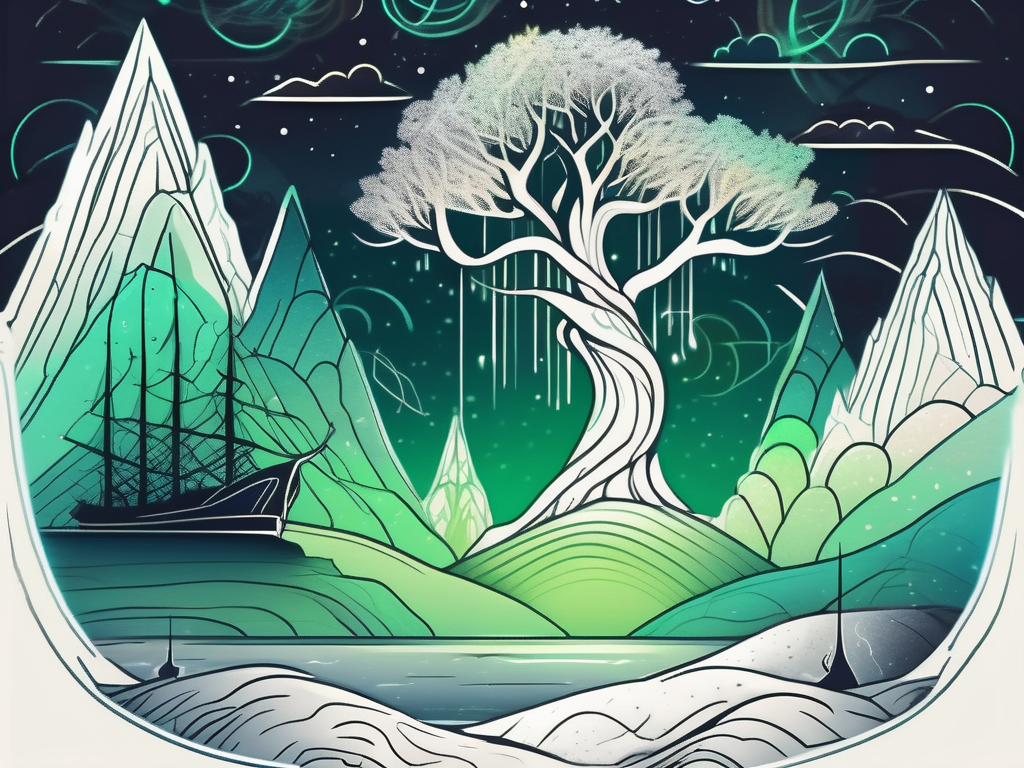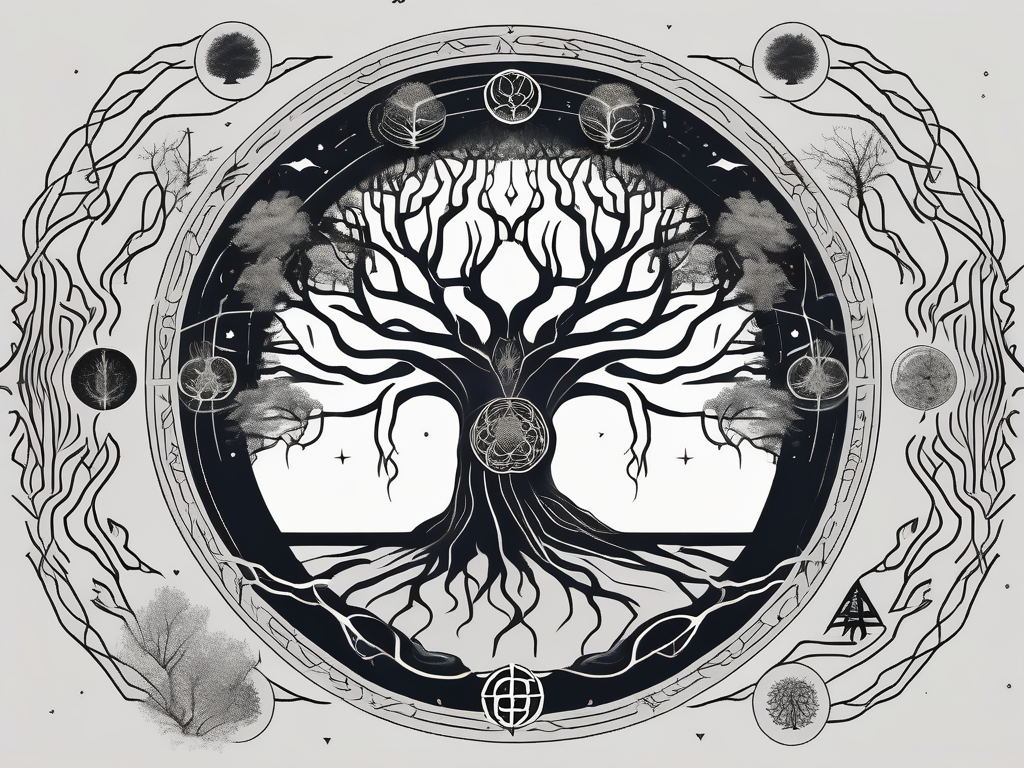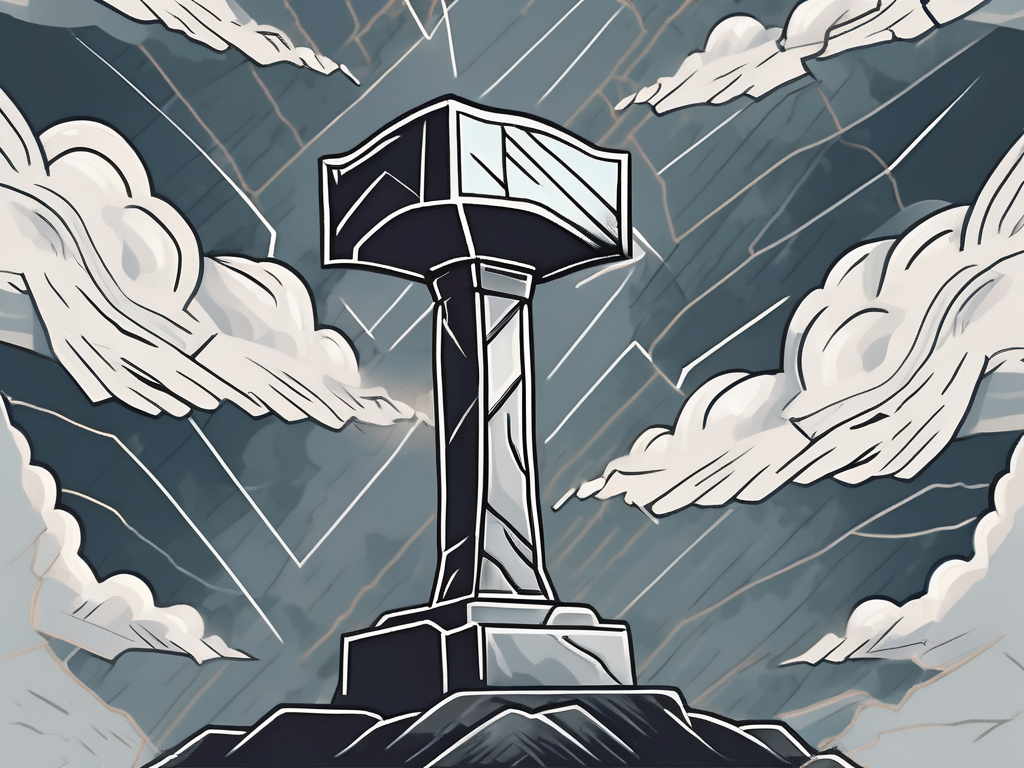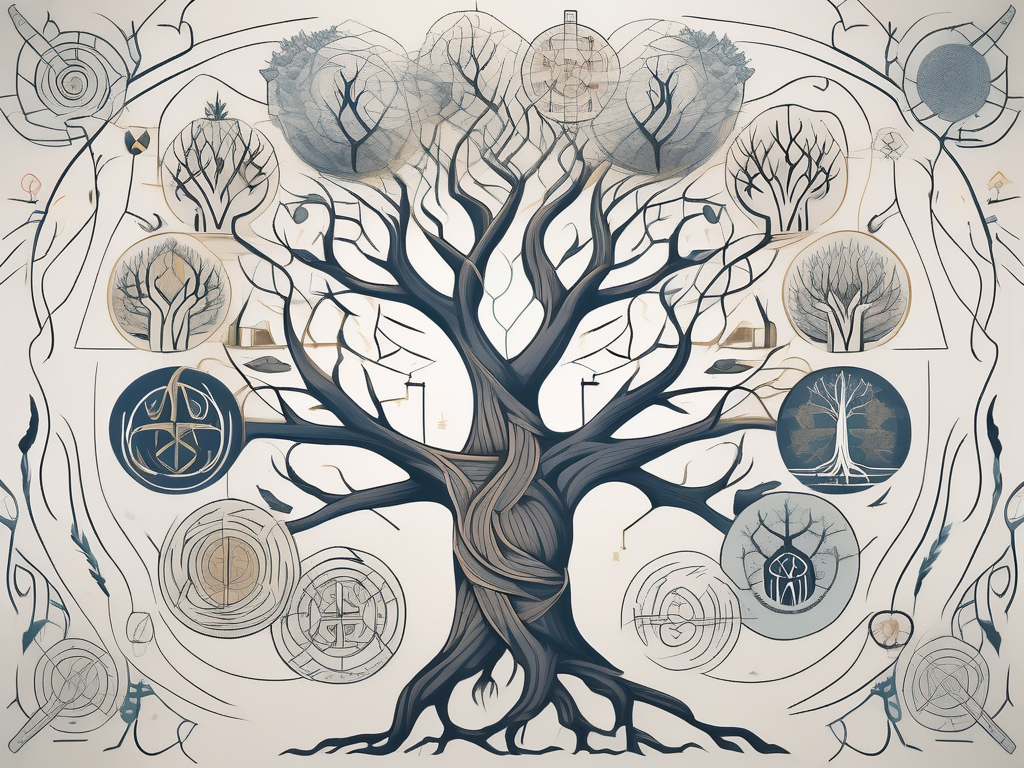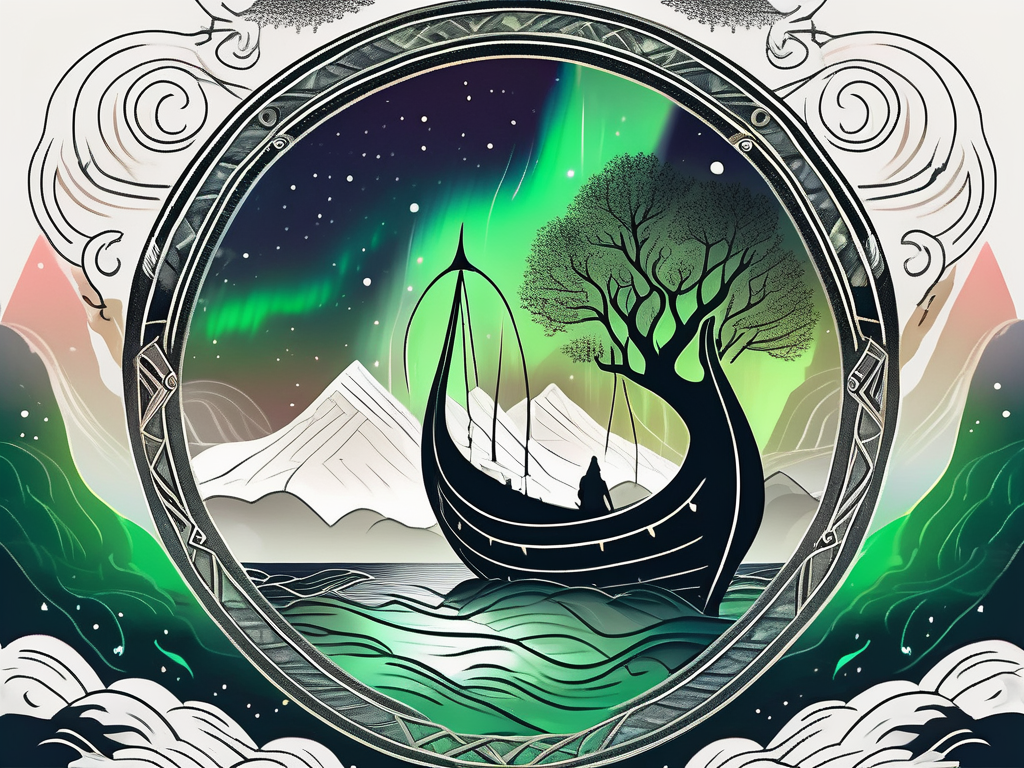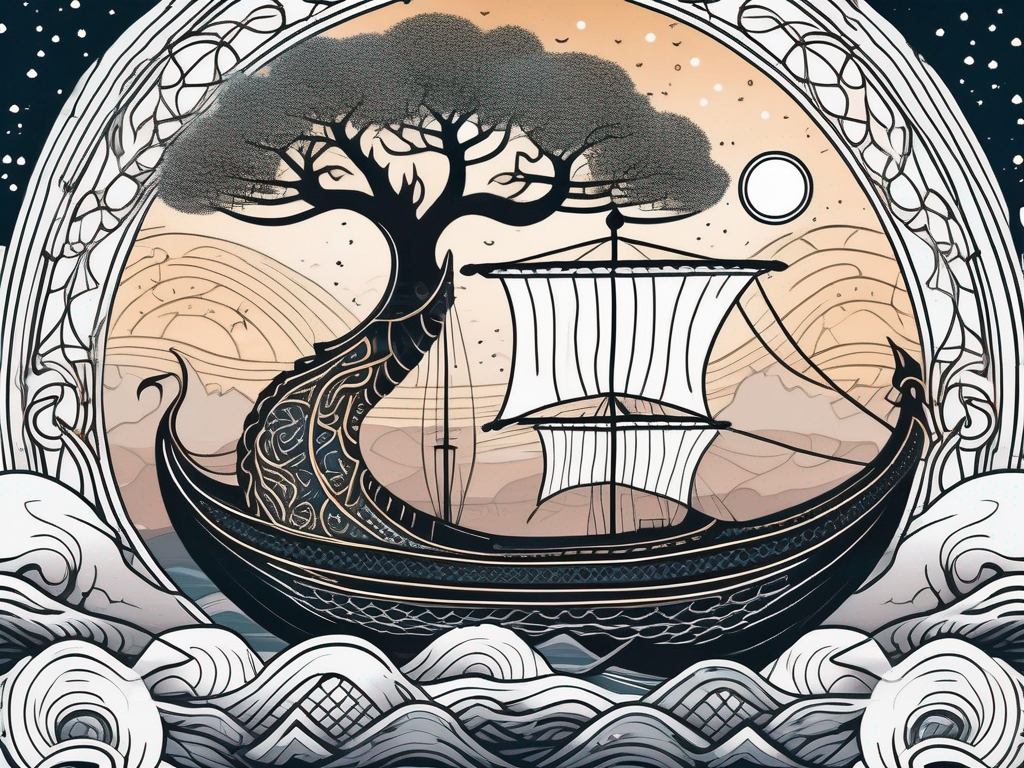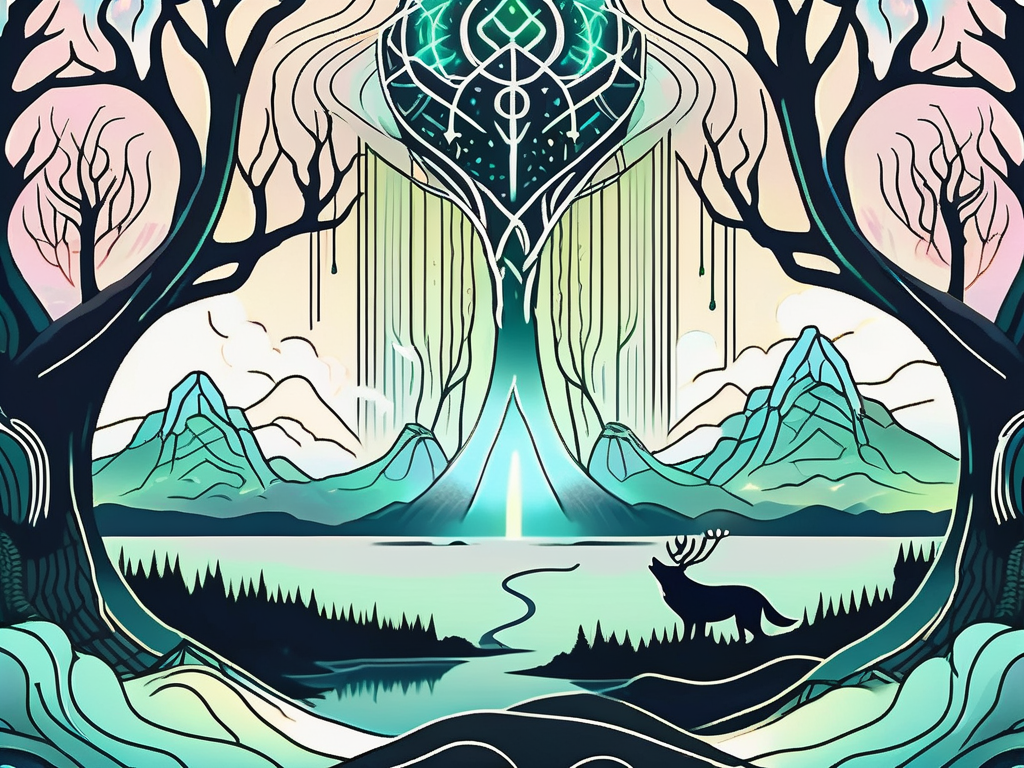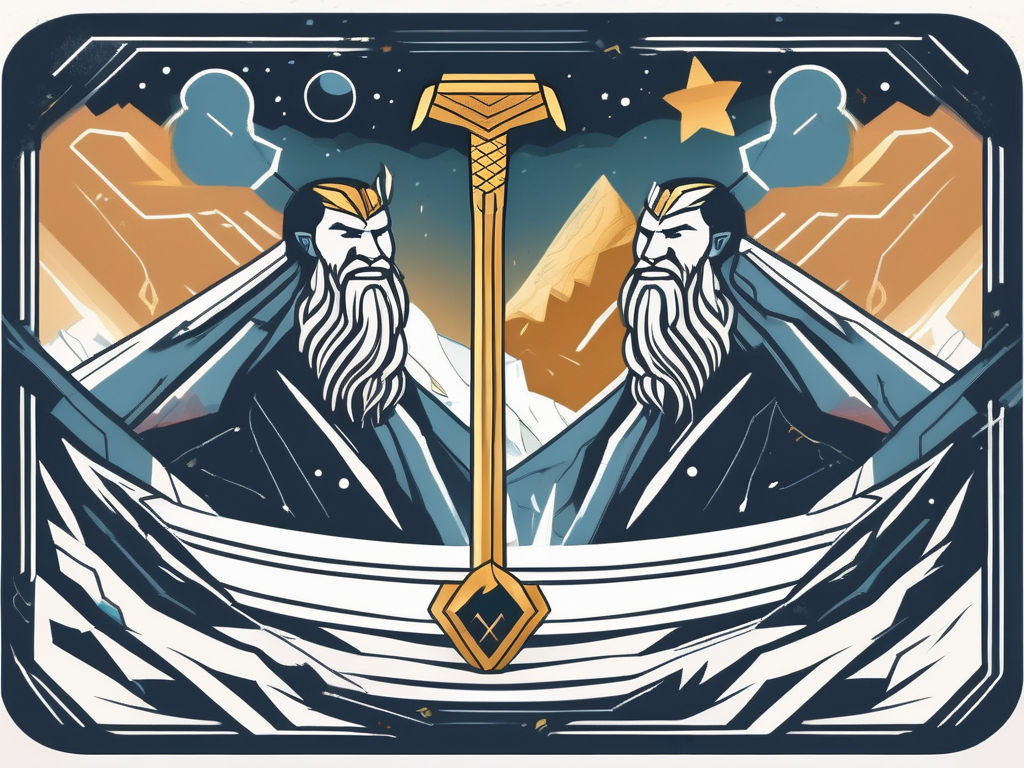Norse mythology is a captivating and rich collection of stories that have fascinated people for centuries. With its intricate narratives, larger-than-life characters, and vivid imagery, Norse mythology offers a glimpse into the beliefs and culture of the ancient Norse people. In this article, we will explore the origins, key themes, and lasting influence of Norse mythology, as well as delve into the intriguing pantheon of Norse gods and the nine fantastical worlds they inhabit.
Understanding Norse Mythology
Norse mythology is a rich and complex tapestry of stories, legends, and beliefs that have captivated people for centuries. Its origins can be traced back to the pre-Christian era in Scandinavia, where it served as a means to explain natural phenomena, understand the human condition, and pass down cultural traditions. These myths emerged from the ancient Norse people’s experiences with their surroundings, such as the harsh winters, unpredictable seas, and rugged landscapes.
During the Viking Age, which lasted from the 8th to the 11th century, the popularity and significance of Norse mythology reached its peak. The myths were transmitted orally through storytelling, songs, and poems, captivating audiences around campfires and at grand gatherings. These gatherings were not only a form of entertainment but also a way to preserve and strengthen the cultural identity of the Norse people.
Origins and Historical Context
The Norse gods and goddesses were not distant and detached figures; they were intimately connected to the world around them. For example, Thor, the god of thunder, was believed to control the weather, while Freyja, the goddess of love and beauty, was associated with fertility and abundance. These deities were seen as both protectors and instigators of the natural forces that shaped the Norse people’s lives.
One of the most well-known figures in Norse mythology is Odin, the Allfather and ruler of the gods. Odin was not only a god of war and wisdom but also the god of poetry and magic. He was said to have sacrificed his eye in exchange for wisdom and hung himself from the world tree, Yggdrasil, for nine days and nights to gain knowledge of the runes.
Key Themes in Norse Mythology
One of the central themes of Norse mythology is the concept of fate and destiny. The gods themselves are not all-powerful; they are bound by the threads of fate, which dictate the events that will unfold. This theme emphasizes the impermanence of life and the profound impact of choices made by both mortals and gods. It serves as a reminder that even the mightiest of beings are subject to the whims of fate.
Another key theme is the cyclical nature of life and the constant struggle between order and chaos. This dynamic is exemplified in the recurring cycles of creation, destruction, and rebirth, echoing the cycles found in nature itself. The Norse people believed that the world would eventually be destroyed in a cataclysmic event known as Ragnarok, only to be reborn anew.
Furthermore, Norse mythology explores the concept of heroism and the virtues valued by the ancient Norse people, such as courage, honor, and loyalty. Heroes in Norse mythology often face great challenges and make sacrifices in pursuit of glory and eternal fame. They are celebrated for their bravery and their ability to overcome adversity, serving as role models for the Norse people.
Influence on Modern Culture
Norse mythology has left an indelible mark on modern culture, influencing various forms of art, literature, and entertainment. Its enduring popularity can be seen in the widespread fascination with Viking lore and the increasing number of books, movies, and TV shows inspired by Norse mythology.
From J.R.R. Tolkien’s Middle-earth to Marvel’s Thor, the influence of Norse mythology can be seen in countless works of fiction. The stories of the Norse gods and their epic adventures continue to captivate audiences and inspire new generations of storytellers. They serve as a reminder of the rich cultural heritage of the Norse people and the enduring power of myth and legend.
The Pantheon of Norse Gods
The Aesir: The Main Gods
The Aesir are the principal gods in Norse mythology, residing in the realm of Asgard. They are a diverse group of powerful deities, each with their own unique roles and personalities.
Odin, the Allfather, is the chief god of the Aesir. He is associated with wisdom, war, and magic. Odin is often depicted as a wise old man, with a long white beard and a single eye, having sacrificed the other for knowledge. He is known for his insatiable thirst for knowledge and his ability to see into the future.
Thor, the mighty thunder god, is one of the most well-known gods of the Aesir. He wields his hammer Mjolnir, which grants him the power to control thunder and lightning. Thor is the protector of Asgard and humanity, and his strength and bravery are unmatched.
Freyja, the goddess of love and fertility, possesses great beauty and magical abilities. She is associated with beauty, love, and desire. Freyja is often depicted as a powerful and independent woman, who is not afraid to assert herself and fight for what she believes in.
Loki, the trickster god, disrupts the order of the gods and frequently becomes involved in mischievous schemes. He is known for his shape-shifting abilities and his cunning nature. Loki is a complex character, sometimes helping the gods and sometimes causing chaos and destruction.
These are just a few examples of the vibrant and complex characters that make up the Aesir. Each god has their own unique stories and adventures, adding depth and richness to the mythology.
The Vanir: The Nature Gods
In addition to the Aesir, Norse mythology features another group of gods known as the Vanir. Associated with fertility, agriculture, and nature, the Vanir possess a deep connection to the natural world.
Njord, the god of the sea, brings favorable winds and is associated with wealth and prosperity. He is often depicted as a wise and benevolent figure, guiding sailors and bringing them safely to their destinations.
Freyr, the twin brother of Freyja, is the god of peace and abundance. He represents the bountiful harvest and is often depicted with a large phallic symbol, symbolizing his association with fertility and prosperity.
The Vanir and the Aesir were once in conflict but eventually reconciled, merging their pantheons and fostering peace between the two groups of gods. This merging of the pantheons reflects the interconnectedness of the natural and divine worlds in Norse mythology.
The Jotunn: The Giants of Norse Mythology
Opposing the gods are the Jotunn, a race of powerful giants who often clash with the Aesir and Vanir. These giants are depicted as embodying chaos, destruction, and primal forces of nature.
Among the Jotunn, the fearsome Thrym challenges Thor to retrieve his stolen hammer, leading to an epic confrontation. Thrym is known for his immense strength and cunning, making him a formidable opponent for the thunder god.
The Jotunn also include figures such as Ymir, the primordial giant from whose body the world was created. Ymir represents the chaotic and primal forces that existed before the gods and the world as we know it came into being.
Another notable Jotunn is the fire giant Surtr, whose role in the cataclysmic event of Ragnarok will be explored later in this article. Surtr is associated with fire and destruction, and his appearance signals the end of the world in Norse mythology.
The Jotunn, with their immense power and primal nature, serve as a constant threat to the gods and the stability of the cosmos. Their clashes with the Aesir and Vanir highlight the ongoing struggle between order and chaos in Norse mythology.
The Nine Worlds of Norse Mythology
Asgard: Home of the Aesir
Asgard is the realm of the Aesir, situated high above the other worlds. It is a glorious realm adorned with golden halls and grand palaces. In Asgard, the gods hold council, celebrate, and prepare for the battles and challenges they face. The rainbow bridge Bifrost connects Asgard to the other realms.
Midgard: The World of Humans
Midgard, also known as Earth, is inhabited by humans and is connected to Asgard through the bridge Bifrost. Midgard is depicted as a vast and diverse land where mortals build their homes, engage in trade, and explore the natural wonders of the world. It is in Midgard that the gods frequently interact with humans, sometimes to aid, and other times to test their mettle.
Helheim: The Realm of the Dead
Helheim is the underworld realm of the dead, ruled by the goddess Hel. It is a cold and grim place where those who did not die in battle go after their earthly life ends. In Helheim, the deceased face an eternity of melancholy, devoid of the pleasures of the afterlife reserved for fallen warriors.
Norse Mythology’s End of the World: Ragnarok
The Prophecy of Ragnarok
Ragnarok, meaning “Fate of the Gods,” is the cataclysmic event prophesied to bring about the end of the world in Norse mythology. The prophecy foretells a series of events, including natural disasters, battles, and the deaths of both gods and giants.
The signs of Ragnarok become more frequent and ominous as the day of reckoning draws near. The gods, aware of their impending doom, prepare themselves for the final battle against their adversaries.
The Battle of Ragnarok
Ragnarok culminates in an apocalyptic battle between the forces of chaos and the gods. The mighty Aesir, Vanir, and warriors who have fallen in battle must face off against the giants, led by Surtr, who wields a burning sword. The clash between these powerful entities results in widespread destruction, with fires engulfing the world and the sea swallowing the land.
Despite their heroic efforts, the gods and their foes ultimately perish in this battle, fulfilling the prophecy of the end of the world.
The New World Post-Ragnarok
However, the destruction of Ragnarok also paves the way for a new beginning. From the ashes of the old world, a new one emerges, ready to be repopulated by surviving gods and humans. The cycle of creation, destruction, and rebirth continues, as it has since time immemorial.
Ragnarok represents the transient nature of existence and the inevitability of change. It serves as a powerful reminder that even the mightiest gods are subject to the forces of fate and that new beginnings can arise from the ashes of destruction.
In conclusion, the fascinating background of Norse mythology reveals a world teeming with mythical creatures, heroic deeds, and profound concepts. From the origins and historical context to the impact on modern culture, Norse mythology continues to captivate and influence people today. The pantheon of Norse gods, with their unique attributes and realms, adds an extra layer of depth to this extraordinary mythological tradition. Finally, the concept of Ragnarok, with its prophecy of an end followed by a new beginning, reminds us of the eternal cycles that shape our world. Norse mythology is a testament to the enduring power of storytelling and the timeless themes that resonate with humanity.
